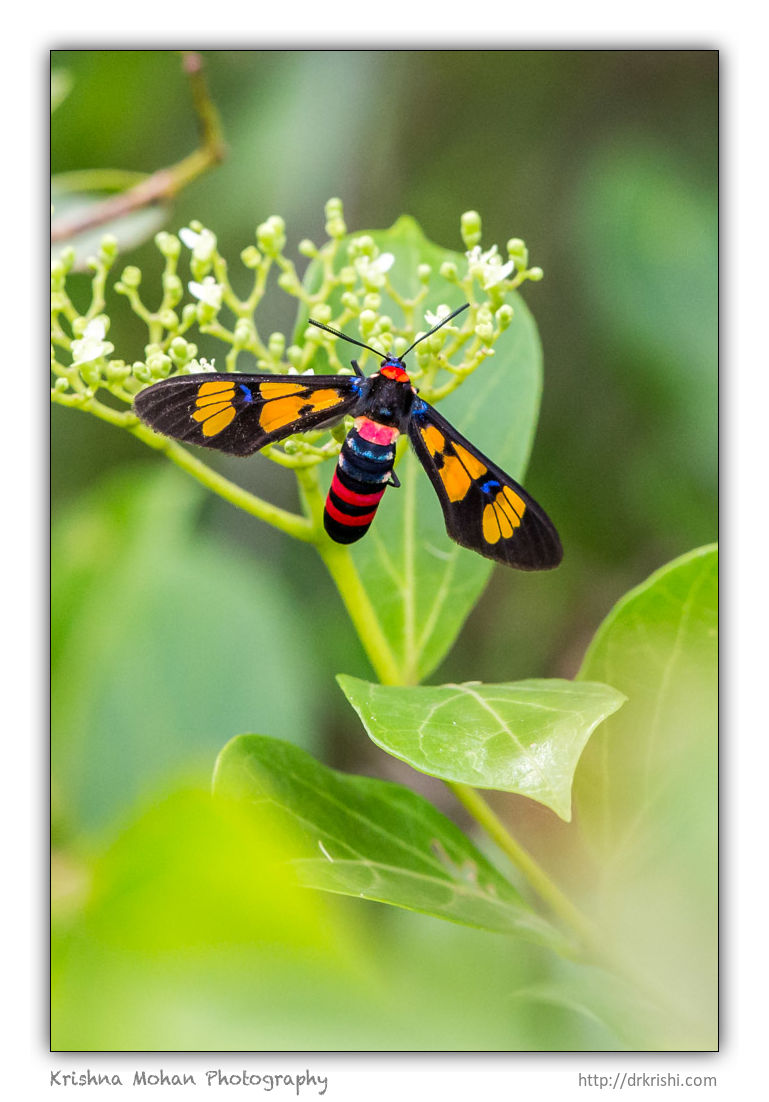
I photographed this day flying moth when I was doing review of Canon EF 500mm f/4L IS II USM Lens near Mangalore. This Euchromia polymena moth is also called a wasp moth as it looks like a dangerous wasp. It utilizes this act of mimicry to put off potential predators who are familiar with the wasp’s sting. I was shooting this moth using Canon EOS 5D Mark III and 500mm f/4L IS II USM Lens hand held near its minimum focusing distance (4 meters). The image is slightly cropped.

The antennae of Euchromia polymena moth are moderately bipectinate in both sexes. Both wings have antemedial and postmedial blocks of pale orange or yellow color, traversed by veins that are dark brown or blackish – the ground colour of the wings. There is a pale blue lunule at the end of the forewing cell between the major areas of pale color. The abdomen is ringed basally with red, the next two segments are ringed blue, followed by only two segments ringed red distally, the third one having a blue ring.

The larva and cocoon of Euchromia polymena found on the host-plant was Ipomoea (Convolvulaceae). The eggs are laid in batches on the underside of leaves. They are smooth, shining, spherical, honey colored. The larvae are gregarious, only separating when almost fully grown. The general body color is brownish orange; the transverse bands of tufts are laterally black but dorsally buff, except on A1 and A8 where they are all black. The rounded cocoon is spun between leaves in a crevice of bark or on any surface. It fits the pupa closely, and the short setae from the transverse tufts are embedded in it, erect, carpet-like. The cocoon is surrounded by a fence of the black setae from the tufts.

Euchromia polymena is found in India and south-eastern Asia, as well as on Sumatra, Java, Sulawesi, Peninsular Malaysia, Borneo and the Philippines. It is also present in the northern part of Western Australia and the Northern Territory.


V.Good. Informative. Details well explained.
Thank for your compliments 🙂